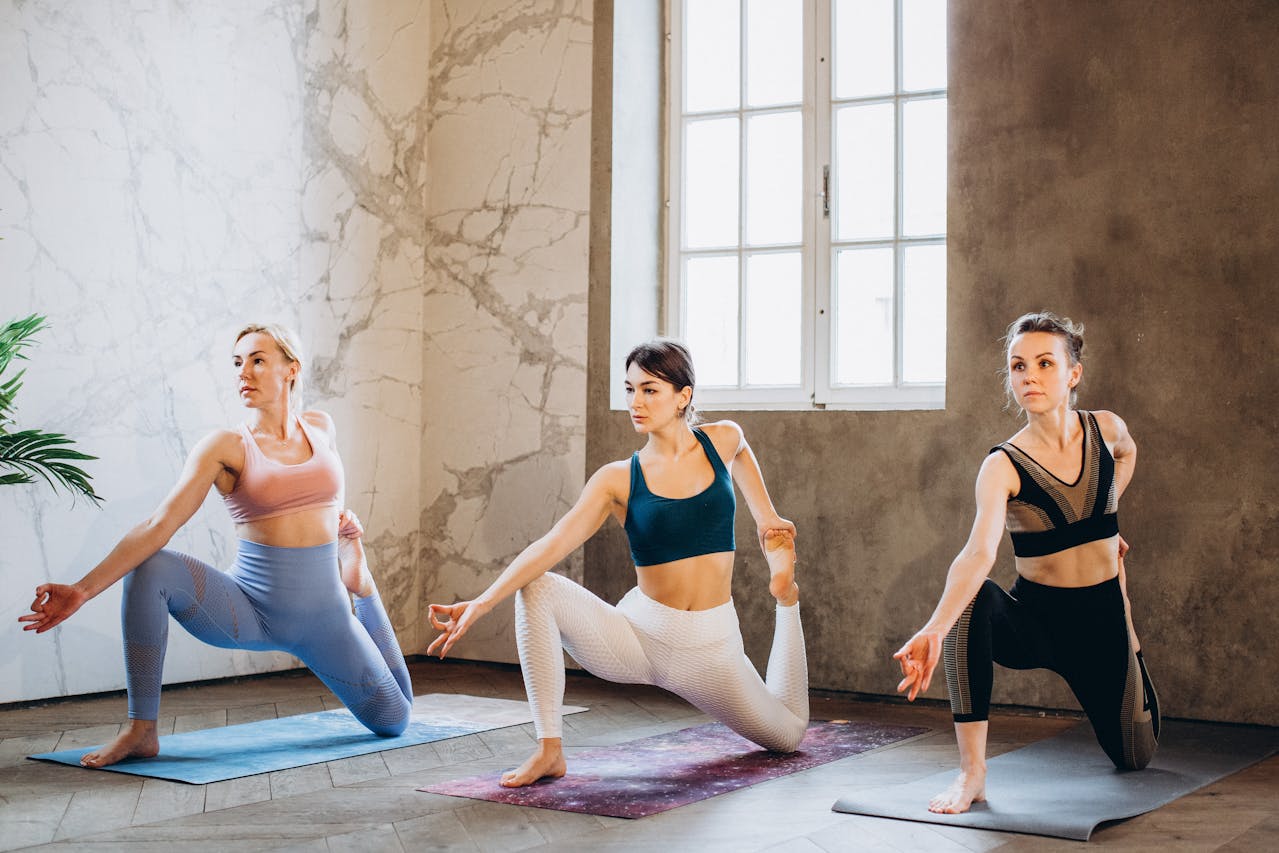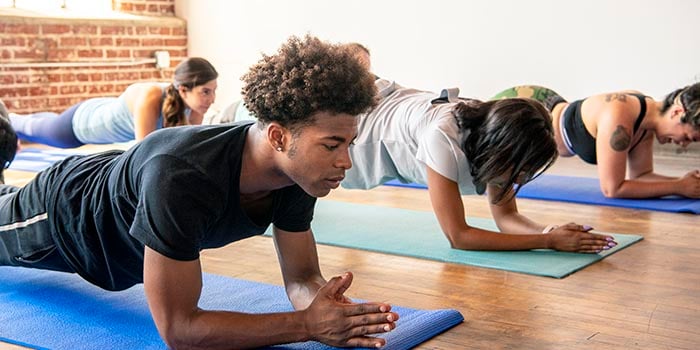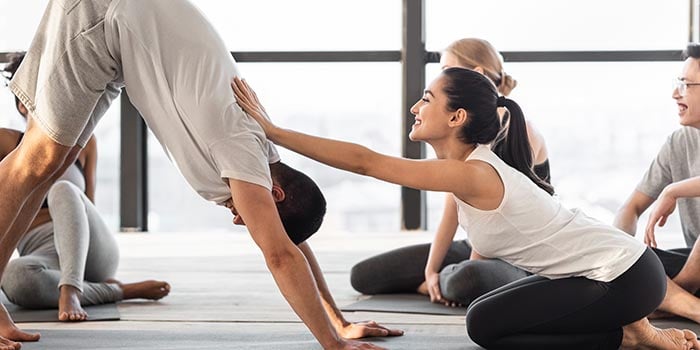
Table of Contents
Are you looking for a reason to take up Yoga Nidra? Or maybe you've just heard about the ancient practice through a friend and are wanting to learn more? Well, you have come to the right place. Allow us at Anahana to teach you a simple guide to Yoga Nidra for beginners.
Key Takeaways
- Practicing Yoga Nidra involves lying on a yoga mat, taking a few deep breaths, and relaxing.
- It combines meditation and Yoga Nidra to guide the mind into a restful state.
- Regular practice of yoga postures can support the practice of Yoga Nidra, which helps with relaxation and stress relief.
- Yoga Nidra offers benefits like improved sleep and emotional balance when you practice Yoga Nidra regularly.
- During a Yoga Nidra session, choose a comfortable position to fall asleep.
- A yoga teacher can guide beginners through the meditation practice repeatedly.

What is Yoga Nidra for Beginners?
Yoga Nidra, also known as yogic sleep, is a yogic practice. However, it is far more than just that. It is a meditative technique and sleep. Through guided meditation, the practitioner enters a conscious state that sits on the boundary of complete rest. This is achieved by the instructor leading practitioners into the initial stages of sleep through instructions. The result is an intensely deep level of meditation.
According to researchers at The University of Minnesota, over time and with dedication, practitioners will undergo,
"the deepest, non-REM delta wave sleep while maintaining awareness both internally and of one's surroundings."
When this state is accessed, the benefits of Yoga Nidra meditation are extensive. Backed by scientific research, it helps you obtain quality sleep by improving long-term sleep patterns, enables you to fall asleep with ease, and allows you to reach a state of deep sleep. In addition, it enhances physical and mental health, improves challenges associated with addiction and trauma, and will increase overall resiliency and emotional balance. By releasing stress and anxiety, the restorative practice of yogic sleep will put the whole body and mind into a state of healing. Just 30 minutes of daily practice can help you improve your wellbeing significantly.
Continue reading to understand what you can expect before taking a Yoga Nidra class.
The Process of Yoga Nidra:
Step 1: Relax the body
You will begin by lying in a comfortable position, either on the ground or on a mat. Optionally, you may choose to support your knees with a pillow, put a rolled-up towel on the nape of your neck, cover your body with a blanket, or shield your eyes. The guided meditation will then begin.
Step 2: Set your intention
Once your body has relaxed, you will then set a positive intention for the practice. This is known as a Sankalpa. For example, you might want to think about what you are longing for at that moment, or perhaps what you wish to experience most in your life. You will repeat this several times in your mind before moving on to the next step.
Step 3: Rotation of consciousness
As you begin to rotate your inner consciousness, the teacher will ask you to take notice of certain parts of your body. You will follow the guidance with focused attention. As you move your awareness through your body, the entire surface of the brain will be stimulated. This will help relax the mind, preparing you for the next step. Doing a mental scan of the body makes you forget about the physicality of your body and shift your focus within. This relaxing approach helps your body rest.
Step 4: Experience opposites
 The teacher will then guide you through opposite experiences. This may include feeling the contrasts of hot and cold or lightness and heaviness. Feeling opposites allows the conscious mind to determine how your body really feels, rather than just responding to and relying on sensations from the external world.
The teacher will then guide you through opposite experiences. This may include feeling the contrasts of hot and cold or lightness and heaviness. Feeling opposites allows the conscious mind to determine how your body really feels, rather than just responding to and relying on sensations from the external world.
Step 5: Visualization
The visualization part of Yoga Nidra meditation exposes what is hidden in the unconscious mind. There are a variety of methods that can be used to find these thoughts. However, a common form of imagery is signs and symbols.
Symbols are understood as the language of the subconscious. They can be very healing and balancing and effectively bring hidden or repressed thoughts and emotions to the surface.
Step 6: Finish with a positive resolution
You will finish the guided Yoga Nidra practice with a positive resolution. As the session comes to an end, your mind will be highly receptive to positive thoughts and suggestions. This state of having an open mind can help strengthen your Sankalpa. The instructor will then guide you back to an awakened state, marking the end of the session. You will feel deep relaxation and inner peace.
Disclaimer
As with any type of exercise, yoga does not come without its own risks. Practicing yoga should be done with care and respect, reducing the risk of injury.
If you are suffering from any medical conditions or are unsure which type of yoga or exercise is best suited for you and your conditions, we advise you to consult a medical professional or your doctor.
Start the Journey to Less Stress
With frequent and dedicated practice, there are endless benefits you can achieve through Yoga Nidra. It can reduce stress, enhance your cognitive performance, improve your physical health, and more. The process is simple, the benefits are many, and the possibilities are life-changing.
What are you waiting for? Start your journey to better health and wellbeing today.
Here at Anahana, we offer one-on-one sessions with our Wellness Advisors. They can connect you with an experienced and skilled Yoga Nidra teacher and help you to reach your goals. Rather than fitting classes into your busy schedule, our instructors will cater the sessions to your individual needs.
References
The Beginners Guide to Yoga Nidra for Sleep and Relaxation – Do You
Training attention for conscious non-REM sleep
Disclaimer
The contents of this article are provided for informational purposes only and are not intended to substitute for professional medical advice, diagnosis, or treatment. It is always recommended to consult with a qualified healthcare provider before making any health-related changes or if you have any questions or concerns about your health. Anahana is not liable for any errors, omissions, or consequences that may occur from using the information provided.

By: Anahana
The Anahana team of researchers, writers, topic experts, and computer scientists come together worldwide to create educational and practical wellbeing articles, courses, and technology. Experienced professionals in mental and physical health, meditation, yoga, pilates, and many other fields collaborate to make complex topics easy to understand. Anahana is also home to specialists in crystals, tarot, angel numbers, astrology, life path numbers, zodiac signs, and horoscopes. By combining evidence-based wellness with spiritual and energetic practices, the team offers clear, trustworthy guidance for both mind-body health and modern spirituality.